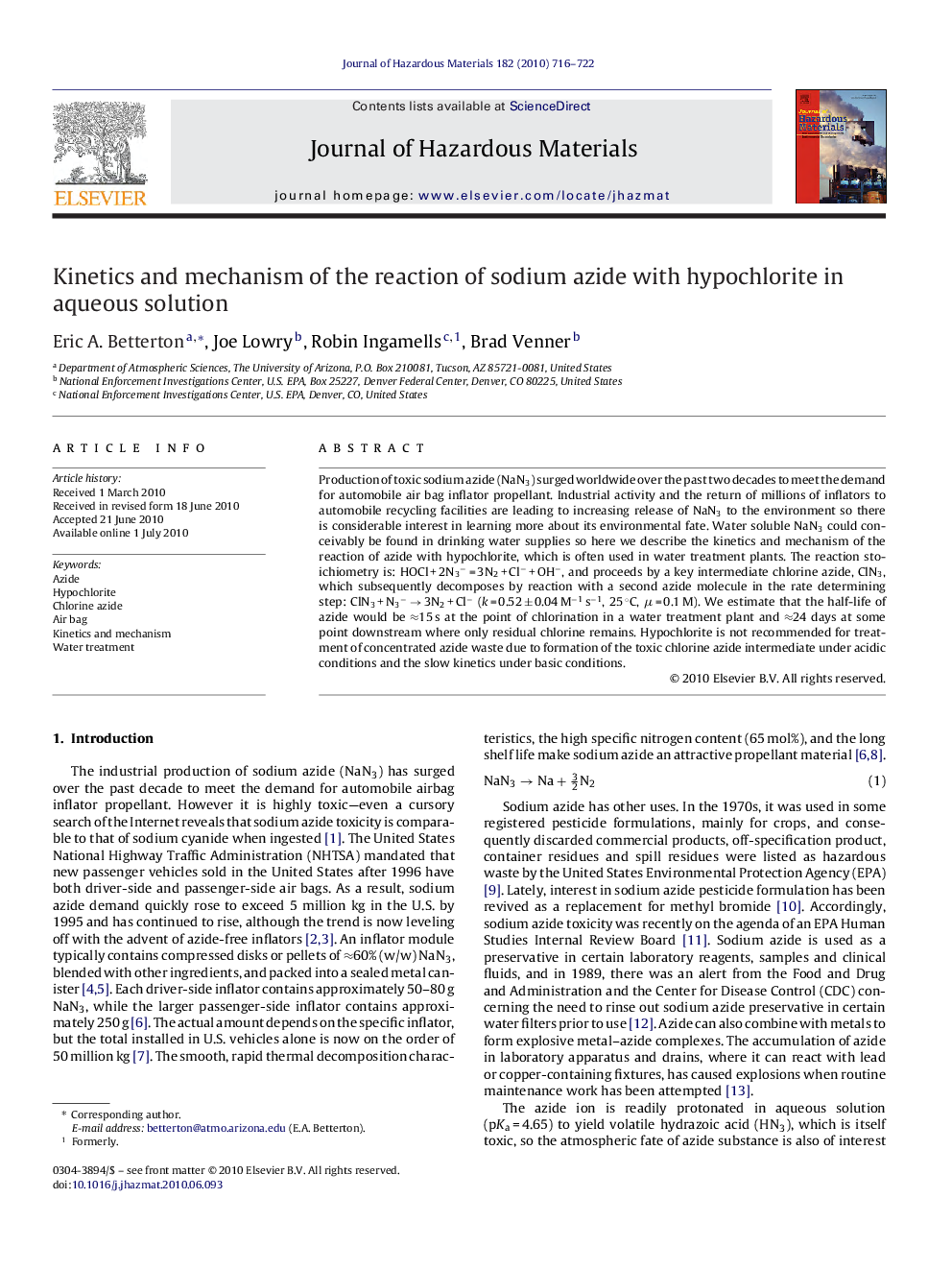| Article ID | Journal | Published Year | Pages | File Type |
|---|---|---|---|---|
| 579745 | Journal of Hazardous Materials | 2010 | 7 Pages |
Abstract
Production of toxic sodium azide (NaN3) surged worldwide over the past two decades to meet the demand for automobile air bag inflator propellant. Industrial activity and the return of millions of inflators to automobile recycling facilities are leading to increasing release of NaN3 to the environment so there is considerable interest in learning more about its environmental fate. Water soluble NaN3 could conceivably be found in drinking water supplies so here we describe the kinetics and mechanism of the reaction of azide with hypochlorite, which is often used in water treatment plants. The reaction stoichiometry is: HOCl + 2N3â = 3N2 + Clâ + OHâ, and proceeds by a key intermediate chlorine azide, ClN3, which subsequently decomposes by reaction with a second azide molecule in the rate determining step: ClN3 + N3â â 3N2 + Clâ (k = 0.52 ± 0.04 Mâ1 sâ1, 25 °C, μ = 0.1 M). We estimate that the half-life of azide would be â15 s at the point of chlorination in a water treatment plant and â24 days at some point downstream where only residual chlorine remains. Hypochlorite is not recommended for treatment of concentrated azide waste due to formation of the toxic chlorine azide intermediate under acidic conditions and the slow kinetics under basic conditions.
Related Topics
Physical Sciences and Engineering
Chemical Engineering
Chemical Health and Safety
Authors
Eric A. Betterton, Joe Lowry, Robin Ingamells, Brad Venner,
